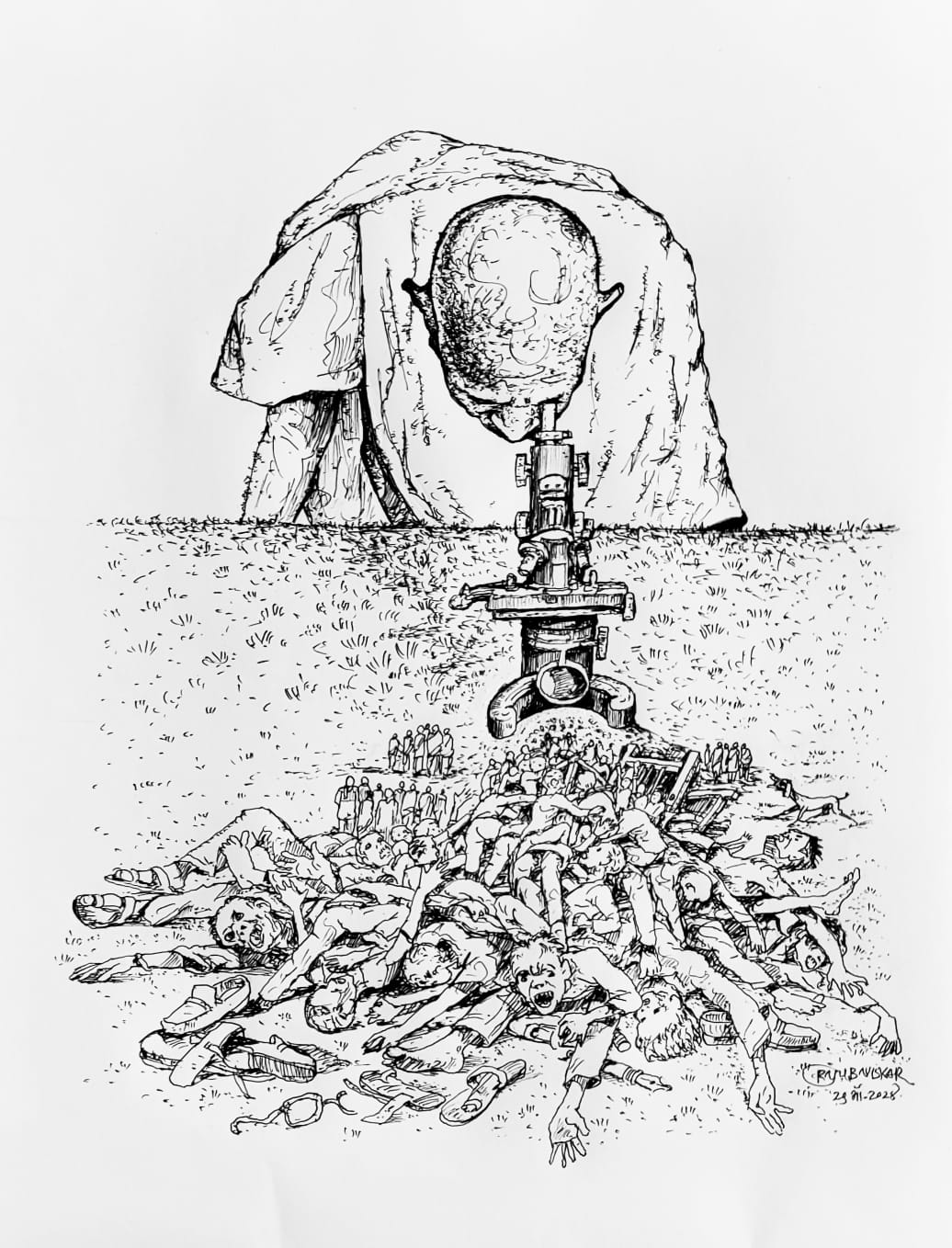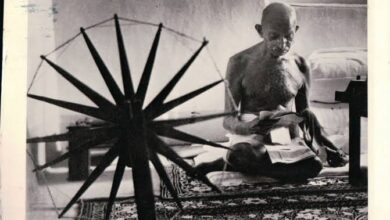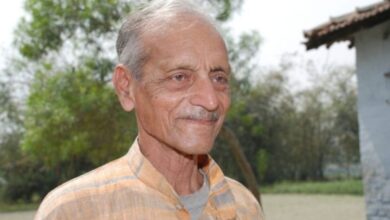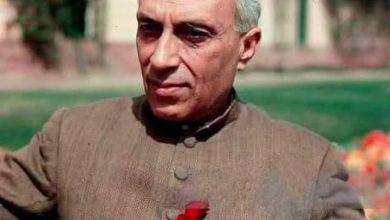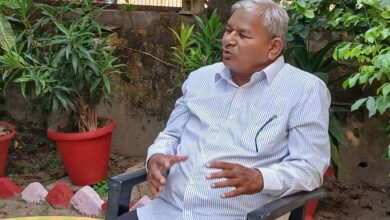Gandhi through the Lens of Artist: Drawings of Raju Baviskar
Siby K. Joseph

Raju Baviskar is an artist from Jalgaon who is engaged in depicting the many faces of Gandhi after a lot of reflection and studying Gandhi. This is not the first time he is depicting Gandhi’s life and work. On canvas, he made a very emotional picture of Mahatma Gandhi after the passing away of Mahadev Desai and Katurba for the exhibition of Gandhi Research Foundation, Jalgaon .
All his drawings during the Corona period indirectly portrayed Gandhian themes. He was in Sevagram Ashram during the Anandshala Camp for school children in 2022.
With watercolor, he painted the Pietermaritzburg Railway incident in which Gandhi was thrown out of the train due to colour discrimination. He also depicted the twin side statute installed at the entrance of the station of transformation of Mohandas to Mahatma in the South African soil. His visit to the ashram was a turning point in his life and he decided to give more time to understand Gandhi and his life. He is also engaged in writing a book. He shared with us three drawings of Gandhi which are a part of a larger project of Gandhi drawings. These drawings were made using a fountain pen.
The first one is Gandhi observing through a microscope. This reminds one of the popular photo Gandhi with a microscope. Here the orientation is altogether different .This artwork masterfully depicts Gandhi’s analytical mind and his love for humanity which drove him to examine every detail, seeking to understand the root causes of suffering.
The artist’s work conveys Gandhi’s meticulous approach to addressing the problems of his people, evident in his earlier work with the indigo peasants of Champaran in 1917 and his later struggles for India’s independence.
In the aftermath of the Jallianwala Bagh massacre, he meticulously scrutinized the atrocities committed by the British East India Company. It also marked his journey from a staunch loyalist and cooperator of the British Empire to an uncompromising disaffectionist and non- co-operator. His dedication to peaceful protest and unshakeable resolve in the face of adversity continue to inspire generations.
The sketch serves as a testament to Gandhi’s transformative power, reminding us of the impact one individual can have in the pursuit of justice and human rights.
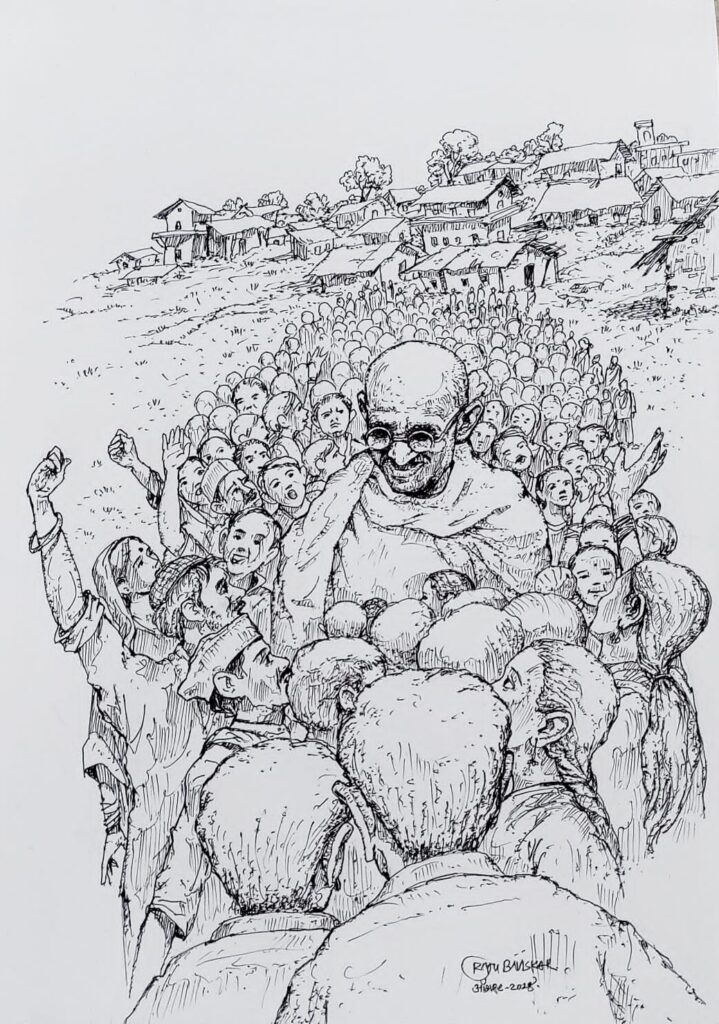
The second one is a portrait of compassion in which Gandhi is surrounded by children and the Masses. This drawing of Baviskar captures Gandhi’s ability to transcend social boundaries and connect with people from all walks of life. The children gathered around him, looking up with adoration and curiosity; symbolizing the hope and promise of a new generation. Gandhi’s gentle smile and warm demeanor radiate compassion and kindness. The masses in the background represent the countless individuals who were inspired by Gandhi’s message of non-violence and self-rule. The portrait conveys the sense of community and shared purpose that defined the Indian independence movement.Gandhi’s serene presence, drawing the viewer’s eye to the warmth and empathy in his eyes. The portrait is a testament to the enduring power of Gandhi’s legacy, reminding us of the importance of compassion, empathy, and unity in creating a better world.
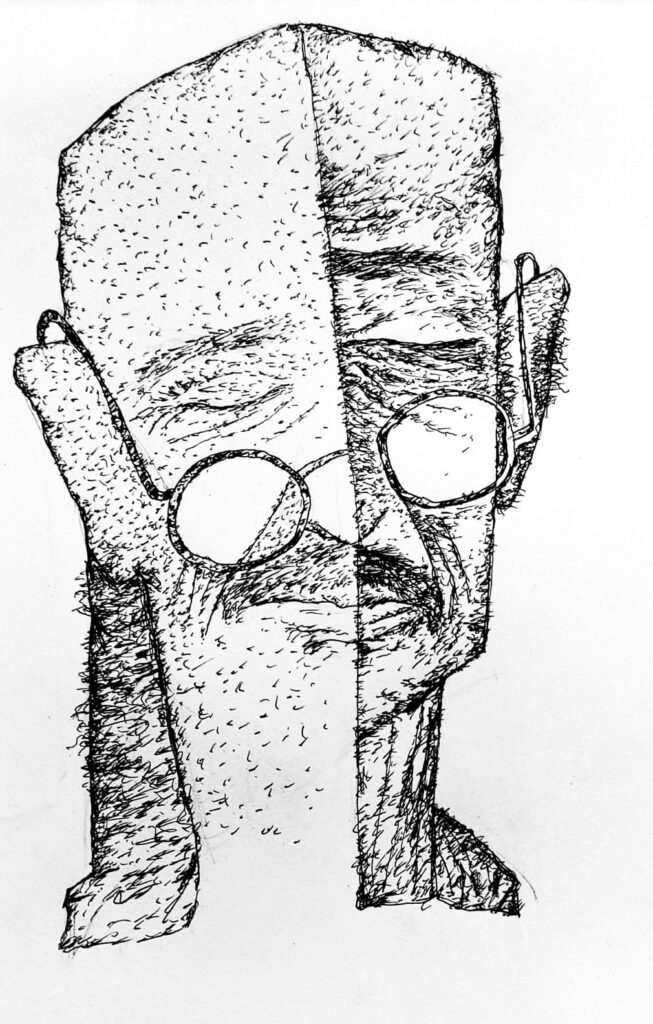
The third one is an abstract painting of modern contemporary art . I sought the help of Susheel Kumar Gotla , an artist based in Hyderabad who made a Gandhi portrait painting exhibition at the Library and Research Centre of Sevagram Ashram Pratishthan, Wardha. He gave me a nuanced understanding of the drawing.
He is of the view that in this semi-abstract portrait, “the artist employs subtle distortions to capture the essence of Mahatma Gandhi’s extraordinary life. By embracing distortion, a hallmark of modern contemporary art, the artist creates a unique and thought-provoking piece that challenges the viewer’s expectations. Inspired by cubism’s rejection of traditional artistic principles, the artist presents a distinctive and surprising portrayal of Gandhi.” Just as Gandhi faced distortions in his fight for India’s independence – navigating challenging situations and living conditions that deviated from the norm – he demonstrated remarkable tolerance, patience, and resilience.
The distortions in the artwork echo the distortions Gandhi faced, yet ultimately, his spirit and legacy emerges triumphant, inspiring us to embrace the beauty of imperfection and the power of resilience.”
Through these drawings Raju Baviskar wanted to revisit Gandhi’s ideas and ideals for posterity . This drawing series is also a creative way of expressing an artist’s anguish in a society in which Gandhian values are altogether ignored and being used by political parties for their vested interest. The artist strongly believes Gandhi’s idea of Sarva Dharma Sambhava can only solve the communal divide that our country is facing today .
About the Author
Dr. Siby K. Joseph is Director, Sri Jamnalal Bajaj Memorial Library and Research Centre for Gandhian Studies, Sevagram Ashram Pratishthan, Sevagram,
Wardha– 442102, Maharashtra
Email: directorjbmlrc@gmail.com

